1. Münster Square
We are standing next to a replanted court lime tree beneath which, in earlier times, justice was dispensed. In 1798, it was renamed tree of liberty, celebrating the annexation of the town by revolutionary France. This marked symbolicaly the end of the reign of the Elector of Trier and the end of the history of the collegiate church with its independent jurisdiction.
The collegiate churches St. Martin and St. Severus had two preceding buildings. Bishop Modoald (ca. 614-645) dedicated the first building to St. Martin. The church received a second titular saint when the relicts of St. Severus were brought here from Italy in 952.
The model gives us insight into the architectural history of the current church.
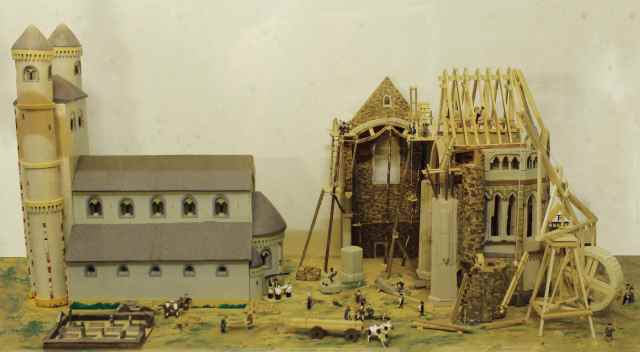
Work on the Romanesque apse began in 1225 and the tower of the preceding church from the 11th c., originally Romanesque, was continued in Gothic style until the end of the 14th c. Due to a lack of funds, it was never completed. Elector Balduin consecrated the church in 1322.The model shows Münster Square before the cemetery, located on the south side of the church, was dissolved.
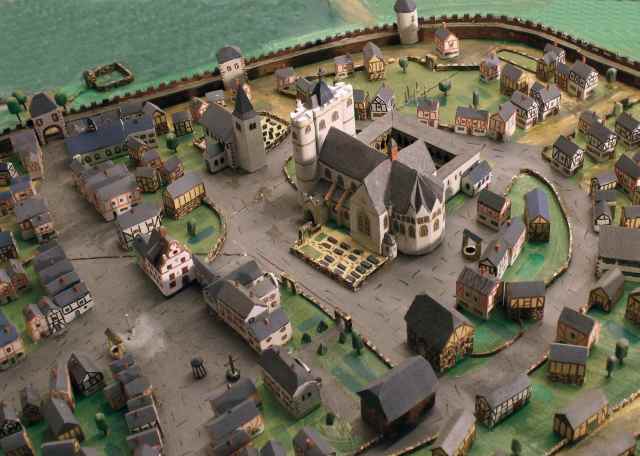
Grave excavations from 2008 and later show that the dead had already been buried at this site in the Merovingian period.

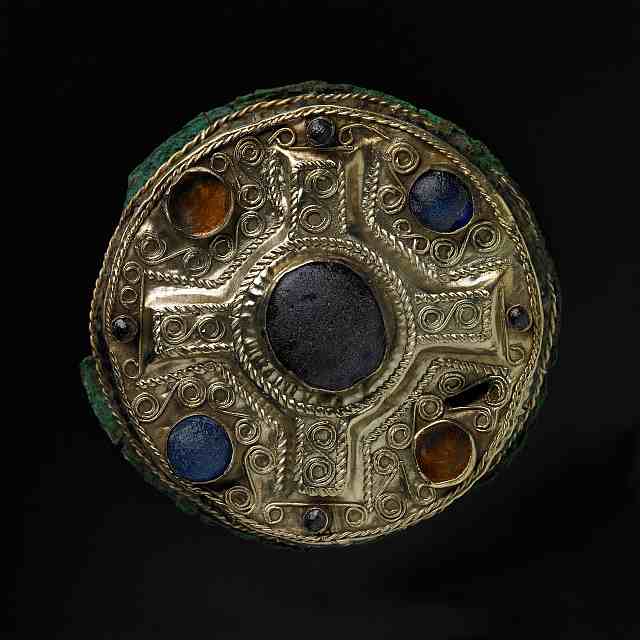
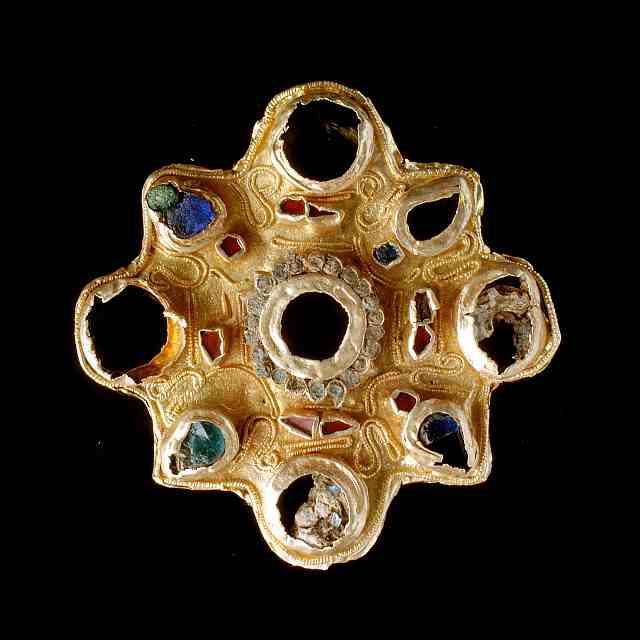
St. Peter's built in 13th c.; until its demolition in 1787 it was the parish church of the town. In front of us, you can see St. Peter's Square. After the cemetery was dissolved in 1823, two pig markets took place here every month until the 1970s. On the left, we can see the exterior of the Provost's residence with one building from 1820. It houses the archeological museum with an exhibition of the grave findings from Münster Square; following that, the archway with the coat of arms of Elector Johann III of Metzenhausen (1531-1540) showing the cross of Trier and the "Wolfsangel" symbol. On our right, the "Kirchpütz", a draw-well originating from before 1575. It is 38 m. deep and has a diameter of 3 m. From the entrance hall of the church the Münster Square opens to the left to the town.
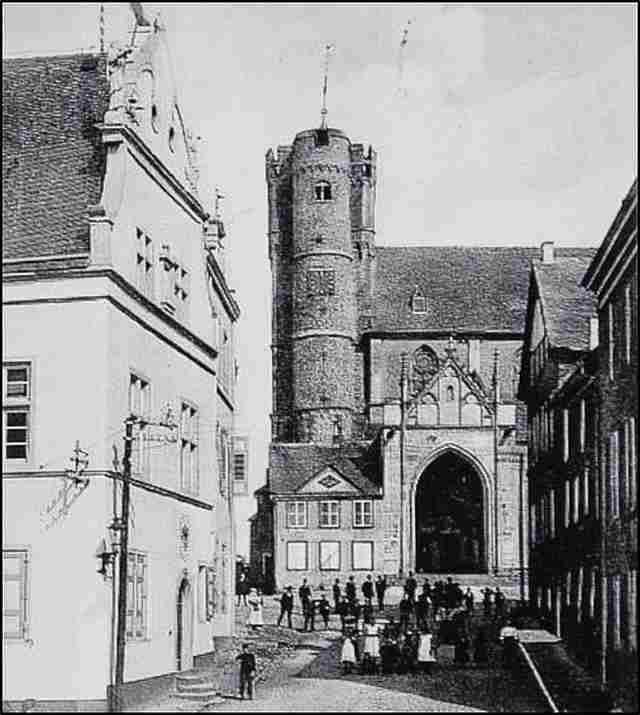
Glossary
Court lime tree
Alongside the oak, the lime tree is known in tradition as a court tree. In the Middle Ages, justice was administered under such trees. As a rule, they were very old and prominent trees. The tree can be seen on Münsterplatz in the city views by Braun-Hogenberg and Merian (16th/17th century).
Collegiate Abbey
The monastery was a community of secular priests. They did not belong to any religious order. The canons, also called canons, owned private property and did not take vows. They could leave the community at any time. The canonate was often a purely honorary title or an additional source of income. In Münstermaifeld, recommendations for admission came from the archbishop, the pope and also the king.
Immunity
In the Middle Ages, immunity meant the exemption of places, persons or possessions from taxes, services and burdens as well as protection from secular intervention. Immunity also included the right of asylum, which protected anyone who entered its domain. This right was abolished for Münstermaifeld in 1791 by the last Elector of Trier, Clemens Wenzeslaus. Until then, a wrongdoer who reached a stone chair near the town hall at St Michael's Chapel could not be seized by the secular authorities.
Severus
Saint Severus (6th century), not to be confused with Severus, who was venerated in Boppard and was Bishop of Ravenna in the 4th century, came from Antrodoco in the present-day province of Rieti. His relics were first brought to Trier by Archbishop Ruotbert (931-956) and from there years later via Hatzenport to the Maifeld. The legend that accompanied him is about the revival of a dead man who died without final consolation because of Severus' negligence. After the revival, Severus gave him the sacraments and was thus able to let him die in peace. Severus was regarded in the Maifeld as a helper and intercessor in cases of illness, famine and drought.
Modoald
He probably became Bishop of Trier in 614. He was important as the founder of monasteries and priestly communities. He was venerated as a saint in Trier from the end of the 9th century. The first mention of a church of St. Martin "in pago Magninse" in 633 in a document of King Dagobert is disputed, as the document was probably forged around 1100. However, the efficacy of the bishop and the archaeological finds at the site make the connection of a St. Martin's church with Modoald's term of office seem well-founded.
Balduin
Balduin Archbishop and Elector of Trier (1307-1354). Balduin of the House of Luxembourg, brother of the German king and Roman emperor Henry VII. (1308-1313) was one of the most influential imperial princes in the first half of the 14th century. During his reign, Münstermaifeld became an outpost of the archbishop's territorial policy. Thus the completion of the construction of the collegiate church was also a demonstration of Trier's presence vis-à-vis the neighbouring Electorate of Cologne. The reinforcement of the town fortifications confirmed the importance of the Münstermaifeld office in securing the archbishop's rule. The enforcement of the land peace protected the urban development against encroachments by the nobility. to top
Merovingian
The rule of the Merovingians as kings of the Frankish Empire, secured with Clovis, who converted to the Catholic faith in 496, lasted until 751. A document of the Merovingian king Dagobert from 633 confirmed all rights and goods at the site of St. Martin's Church to the bishop Modoald. Although this document has been proven to be a forgery, the origin of the church and the community of priests in the time of Bishop Modoald is regarded as certain.
Johann III of Metzenhausen
Born in 1492 in Neef an der Mosel, Johann made a fast career in the Trier cathedral chapter. In Rome in 1514, he negotiated the distribution of the revenue between Trier and Rome from the sale of indulgences. The indulgences were sold on the occasion of the exhibition of the Holy Robe in 1512. Johann III had initiated many building measures during his 10 years as archbishop. These included the mighty construction of the Marstall in the Propstei, which was destroyed by fire in 1914.
"Wolfsangel"
The Knights of Metzenhausen had the wolf's tang in their family coat of arms. The wolf was considered a beast and the right hand of the devil. The wolf's tang was used to catch and kill him. The knightly dynasty stood up to the evil, the devil and his henchmen. They expressed this with the wolf's tang in their coat of arms.



